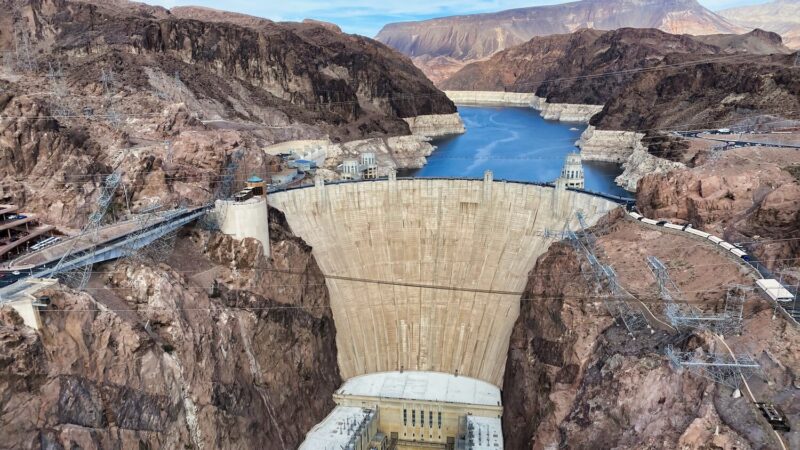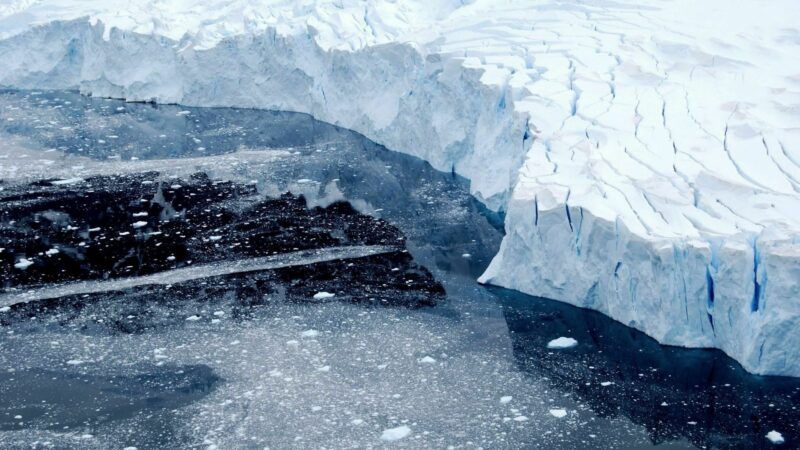
Understanding complex international questions about geoengineering
UCLA Law School’s Ted Parson weighs in on climate geoengineering—and some of its sticky governance problems he’ll be tackling in a new project.
People have unintentionally affected Earth’s climate for over a century through our lives, habits and industry. Why not do so in a thoughtful, deliberate manner to create positive outcomes?
That’s what geoengineering advocates are now asking. Geoengineering—large-scale manipulations of environmental processes to counteract things like global warming—can sound a bit like science fiction. The topic remains highly controversial, even among the experts who study it. Used correctly, however, it could be a useful tool to soften the most severe effects of climate change. Interventions such as spraying reflective aerosols into the stratosphere may someday keep things a little cooler.
We talked about the subject with UCLA School of Law’s Ted Parson, co-director of the Emmett Institute for Climate Change and the Environment. He recently launched a project aimed at better understanding—in a legal and governance sense—how climate engineering might be implemented within the often-tempestuous context of international politics and policy.

Geoengineering seems to be a hot topic these days. Why are so many scholars and other people beginning to embrace the concept?
The main reason is increasing recognition of how serious the risks from climate change are, and how many limits there are to our ability to manage those risks through emissions cutting and adaptation alone. There’s no sense in which geoengineering measures are being considered as replacements or substitutes for those mitigation and adaptation measures—those remain absolutely essential and the first priority—but there are a lot of respects in which we may face risks they simply won’t be adequate to address, principally because of the long time constants of the climate system and the slowness in our ability to deflect climate risks by cutting emissions.
Is there some sense in which this particular strategy resonates with groups that may be resistant to other efforts to counter climate change?
It’s a little early to characterize who is where. Geoengineering interventions have been a point of marginal consideration or an afterthought for about 50 years. They only started to get prominent about 10 years ago, when Nobel laureate Paul Crutzen published an essay pointing out that no matter how much stronger we move toward mitigation and adaptation, a lot of serious climate-change risks would remain. In the first years after this came to attention, a few ill-advised things were published, some by people who had previously been associated with opposition to mitigation measures. They suggested that the availability of geoengineering made it easy to solve climate change and we didn’t need to worry so much about mitigation. I have really not heard people advancing arguments like that for several years. There is a lot of worry that thinking about geoengineering might resonate with people who deny climate change or oppose mitigation, but I have seen very little of that. At least for now, the worry that people will advance such arguments is much stronger than the evidence people are actually doing so.
You recently launched a three-year climate geoengineering project. Can you tell me a bit about that? What will it do and what are some of the goals?
This project aims to advance understanding of the regulatory, legal and governance requirements of geoengineering interventions. This isn’t looking at scientific and technological issues—it’s looking at the challenges to effective, prudent, legitimate control posed by these technologies. These are serious questions because of the scope of geoengineering interventions. For interventions that would dim incoming sunlight a little bit, the methods that have been identified or speculated about so far will have impact at global scale. And yet, relative to other global efforts, they are low in cost and fast in action. They look cheap and easy. That raises questions about how to decide whether and how to use them, how to control their use, how to marshal input of multiple governments, and how to achieve transparency that are quite unprecedented in international law. If you imagine a world that is adequately dealing with proposals to do these things—the world 30 or 50 years from now, in which nations might say “we think it’s important to pursue this,” while others might say “no, we think this is terrible, we don’t want to do it”—there has to be decision-making capability at the international level. These things don’t lie within the unilateral capability of any nation to control.
What sort of political and governance questions are being raised by the technology now?
The first questions raised are at a much smaller scale. There’s been about five years of modeling research, but there have barely been any actual experiments. There are now a few proposals to do very, very small experiments involving putting stuff into the atmosphere. One proposal comes from a group at Harvard that wants to spray about one kilogram of fine aerosol mist from a balloon in the stratosphere. They want to fly other balloons around it and measure its effect on radiation and ozone chemistry. The environmental impact is zero, for all intents and purposes, but the experiment could be informative about the potential effects and risks of interventions at a much larger scale. Yet even tiny research projects like this one are controversial. People worry not about the direct activity and the risk it carries, but about the effects taking these steps would have toward understanding and accepting the technologies, and the impacts they might have on the effectiveness of regulation on climate change. So there’s an active debate underway about what requirements or restrictions need to be imposed on experiments of this kind.
Last month you co-hosted a conference on solar geoengineering at Harvard University. What were some of the big takeaways?
We had a detailed discussion about the kinds of experiments scientists are thinking of doing to understand the effects and risks of these technologies. Then we began a conversation about how you could move research forward, carefully and prudently, while building public understanding of solar geoengineering and other novel and contentious technologies. Everyone in the room is keenly aware of the unfortunate track record of GMOs and nuclear power, and the way those came to be perceived as kind of horrifying and destructive things. They elicited a huge amount of backlash, principally because they were oversold and because legitimate concerns were blithely swept away. There is a lot of discussion underway now about how to proceed in a step-by-step way to disseminate knowledge about what these things are, how they work, how they might help and what risks they carry—but in a way that doesn’t impair the possibility of using them in the future, if they should turn out to be needed.
How do you respond to these technologies on a personal level? What’s your gut feeling?
I’m hopeful and alarmed at the same time. It’s increasingly clear that efforts at cutting emissions have been woefully weak. It’s also clear that even if there were a sudden shift toward intensive efforts to cut emissions, there would remain an awful lot of risks from climate change over the next few decades. The possibility of engineered interventions making big reductions in those risks—if they are competently and prudently used—is a source of a lot of hope. On the other hand, when almost anybody hears people are thinking about spraying stuff in the atmosphere to cool the earth a little bit, the first reaction is usually horror. Even after you learn more and that visceral reaction fades, it is clear there are a lot of grounds for worry. That includes worries that “they might not work” or “they might cause more harm than they relieve.” But even more serious are worries that these things will be used incompetently or recklessly, generating conflict between nations over whether and how to use them.
So I feel both hope and alarm. When you put them together, I think it says more research is really important. We need to learn more about how these would actually work. And their governance, broadly construed, is crucial. Depending on whether these things are well governed or badly governed, geoengineering could help a lot or make things much worse.
Main image: Photo of clouds from un.org.
Published:


